Faith Ringgold on capturing the complexity of the American experience: ‘It takes courage to be free’
We interview trailblazing American artist Faith Ringgold, whose major retrospective exhibition ‘American People’ runs until 27 November at the de Young Musuem, San Francisco
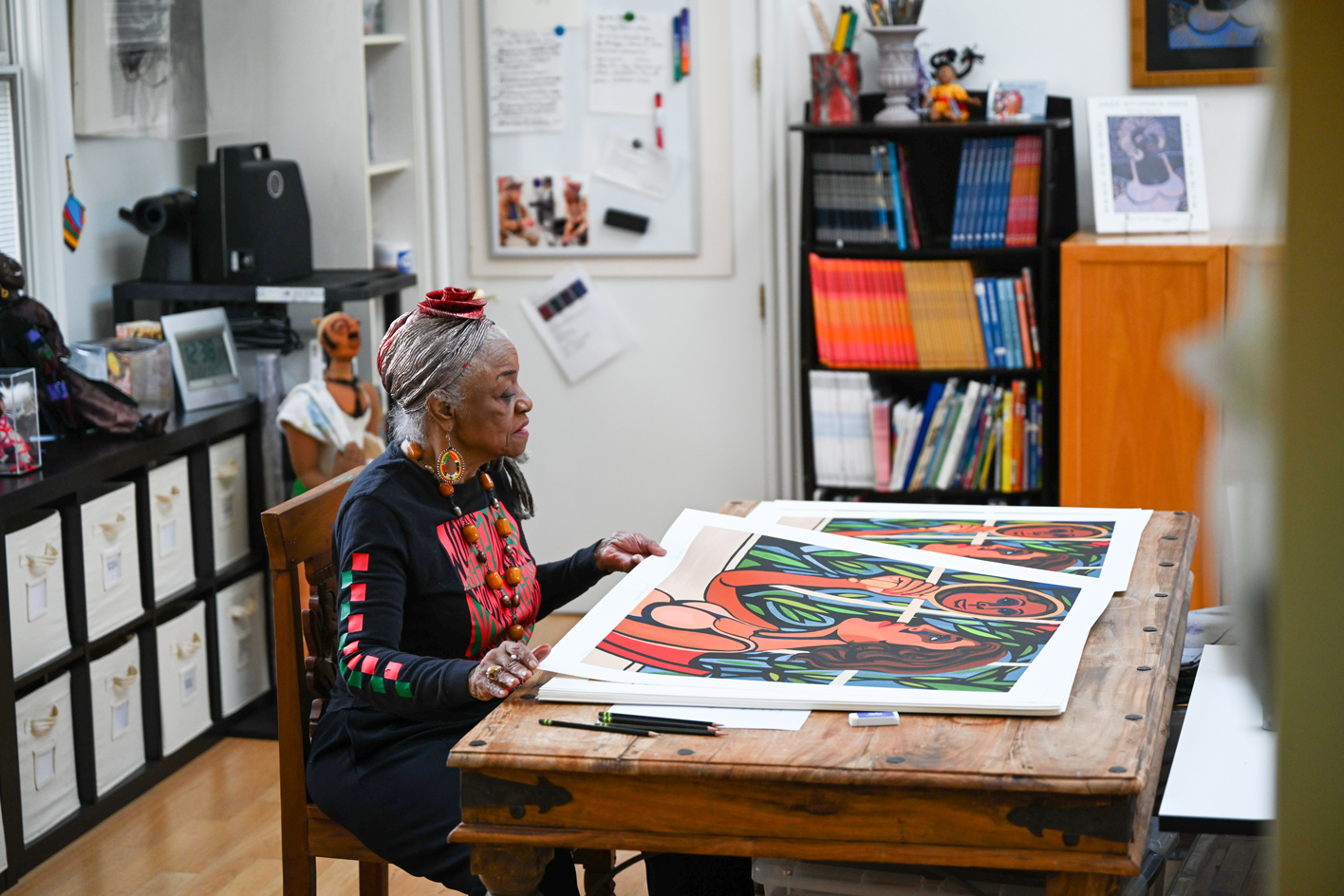
Faith Ringgold is an artist with a humble manner, though her impact on art history is nothing of the sort. Born in Harlem, NY, in 1930, Ringgold is amongst the most important political artists of our time. With powerful, emblematic narratives, she has spent five decades uncovering the many subjectivities of history, challenging historic stereotypes and false truths of African-American identity, championing underrepresented narratives and drawing attention to gender inequality. Ringgold’s bold, indelible impact on art history and the lives of Black Americans, Black women and Black people more widely can never be erased.
With a major retrospective now on view at San Francisco’s de Young Museum, Ringgold is gratified by the recent response to her work. ‘My mother always said I would have to work twice as hard to go half as far. I believed in myself – as my family did – and just kept working no matter what the response was. I am delighted to see my work appreciated by so many,’ says the artist, whose work is framed intellectually from her position in the Harlem Renaissance.

Faith Ringgold, The American People Series #19: US Postage Commemorating the Advent of Black Power, 1967
Ringgold’s work in narrative quilting has made her a pioneer of the medium. Her ‘story quilts’ are actually paintings – acrylic on canvas – with pieced fabric borders. Unduly associated with craft, the medium has been adopted into the narrative of contemporary art in more recent times. Though Ringgold did not consider herself a pioneer at the time. ‘Throughout my professional life I felt free to do whatever I wanted to do – and use whatever material was suitable for my vision. I felt no limitation.’
As well as her tapestries, her narrative scenes – such as the American People series, the focus of the de Young exhibition – confront race relations in 1960s America. A mural-scale painting concludes the series, culminating in violent chaos with the riots that were erupting throughout the country. Fighting in the streets and the undocumented killings of African-American people were frequent. Blood is drawn and spatters evenly; the struggle touches all. Done-up, buttoned businessmen represent the core of the struggle; a battle amongst the middle class for the surety of their social positioning.
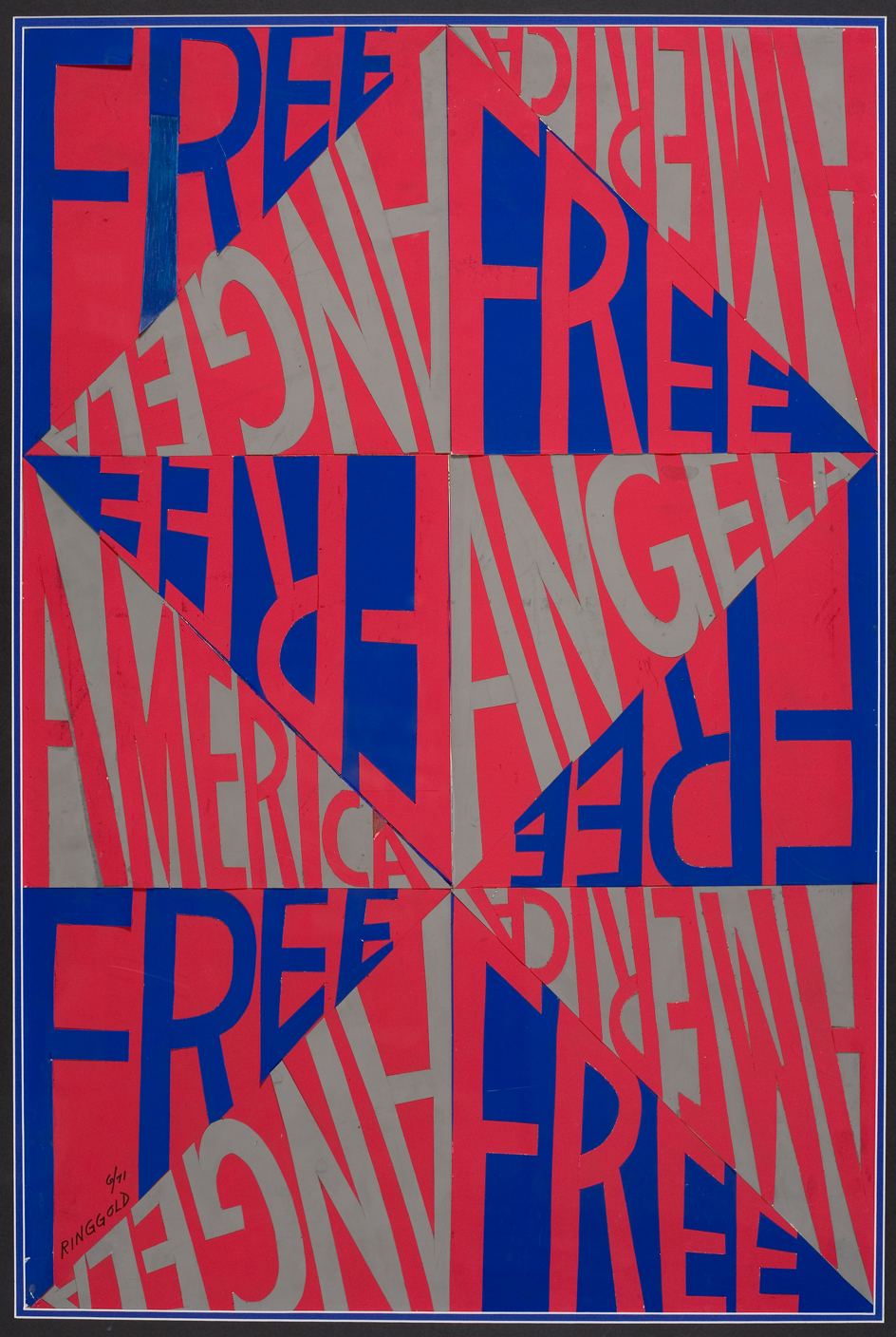
Faith Ringgold, America Free Angela, 1971
‘The images I created reflect my experiences and what was going on around me. In the 1960s, I embraced the civil rights movement because Black artists were being overlooked. In the 1970s I embraced the women’s movement because female artists were ignored more than men. I think the same issues are relevant today.’ Many of the key works of the Black Arts Movement were solely focused on Black masculinity, and this often threatened to drown out the voices and messages of Black women artists of the movement. Indeed, Ringgold would come to realise, after joining, that the movement would serve to give men power over women. Ringgold’s work is an expression of freedom, as an African-American, as a woman, and above all else as a Black woman.
‘I hope people will be inspired by my art and find the courage as I did to do whatever they feel moved to do – whether it’s in art, science or any discipline. It takes courage to be free and express one’s own vision. Everyone is important and has a unique story to tell.’
We are living in an age where purpose is being reinvented and historical narratives are being uncovered and afforded due attention. How far have we come and how much farther do we have to go? To this, Ringgold muses ‘We have made progress to a certain extent but there is a long journey ahead. There is much work to do before our society attains true social justice. These past few years have exposed the extent of prejudice in our society. There is a lot of catching up to do before there is true equity.’
Receive our daily digest of inspiration, escapism and design stories from around the world direct to your inbox.

Faith Ringgold, Who's Afraid of Aunt Jemima?, 1983
Ringgold allows us to believe in the possibility of freedom; her work is deeply personal yet universal. It unravels an experience shared by many through her unique perspective. It can be said that some of the best art is made through the exploration of one’s own experience. Ringgold agrees: ‘It is essential for an artist to find their voice. What distinguishes a great artist from a mediocre one is their artistic vocabulary. One may be influenced or inspired by another artist's vision, but finding one’s own distinct voice is the goal. You cannot make art about anything you haven’t experienced.’ Ringgold’s work draws you in because faith is at the centre; to look at her multifaceted oeuvre is to enter a relationship with history, her story and your own.
Ringgold is rightly credited with expanding the American story; but at the core of her work, her own deeply nuanced story resonates, a story for us all to share. Art is a unique expression of life, and Ringgold's expression urges us to take notice of a bigger story, more American People, and a more expansive humanity.
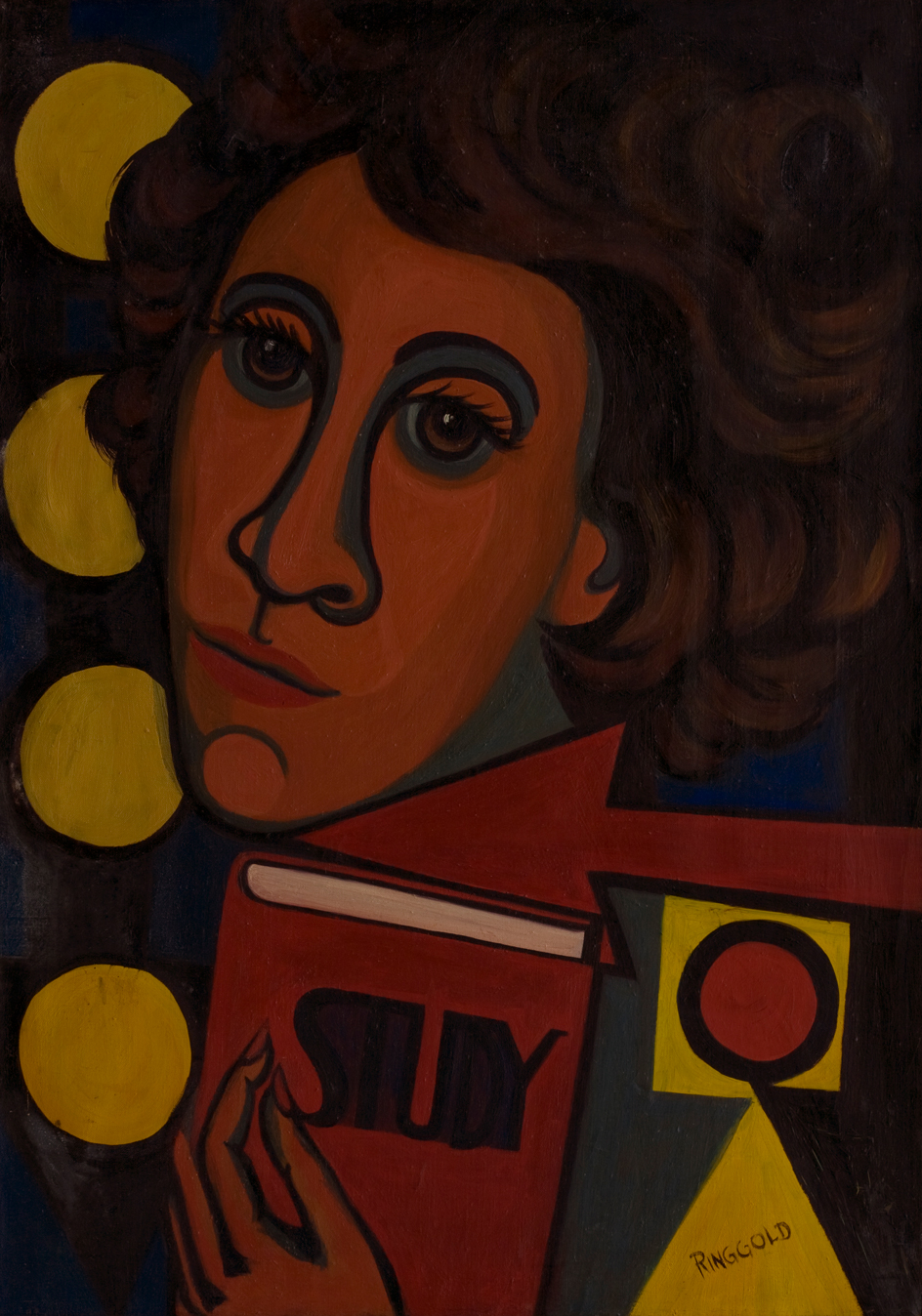
Faith Ringgold, American People Series #10: Study Now, 1964
'Faith Ringgold: American People', until 27 November 2022 at the de Young Museum, San Francisco. deyoung.famsf.org
-
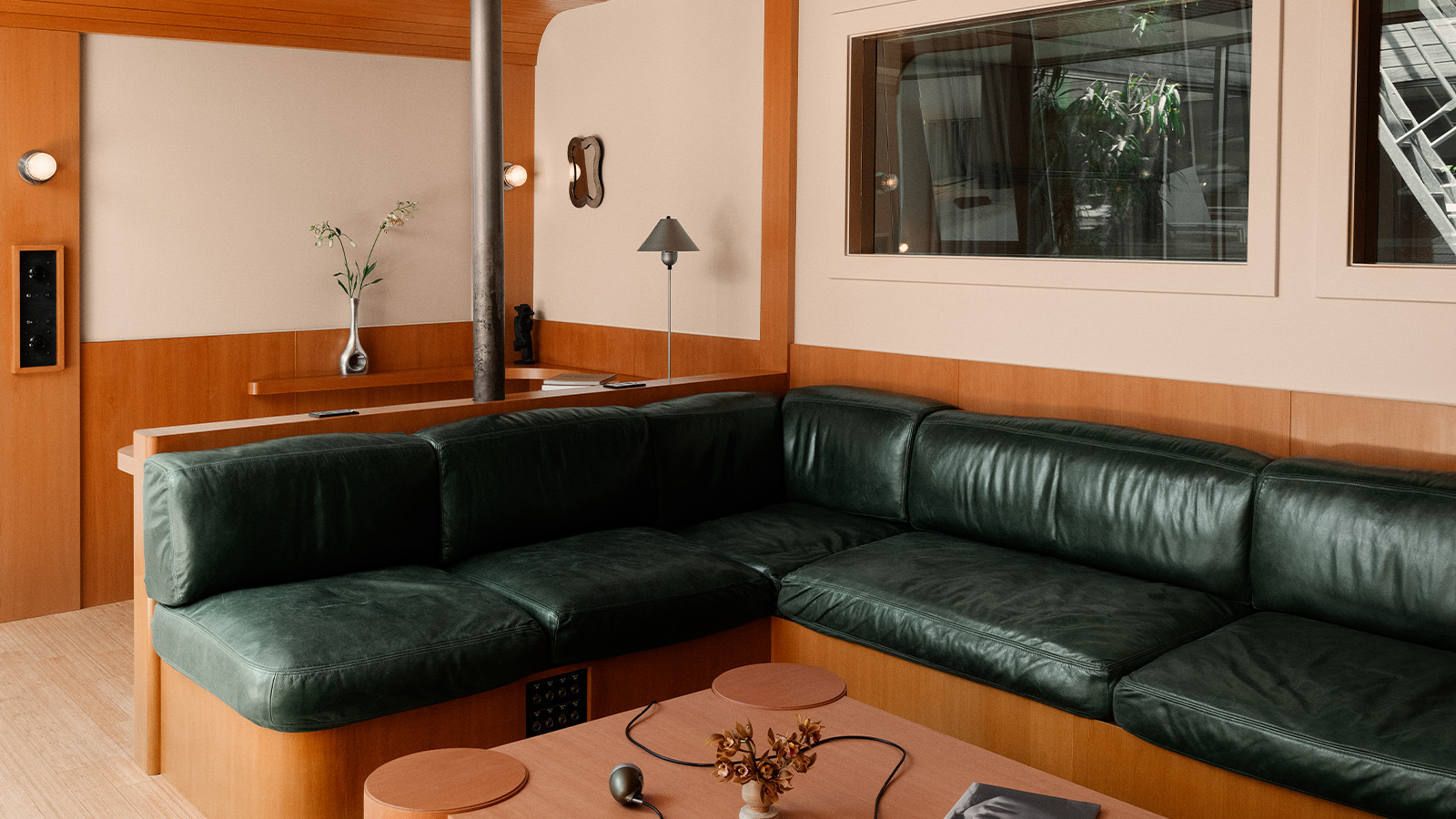 Inside producer Kenny Beats' retro-inspired Los Angeles recording studio
Inside producer Kenny Beats' retro-inspired Los Angeles recording studioDrawing inspiration from the golden era of Motown recording studios of the 1960s and 1970s, Ben Willett’s design weaves in modern influences.
-
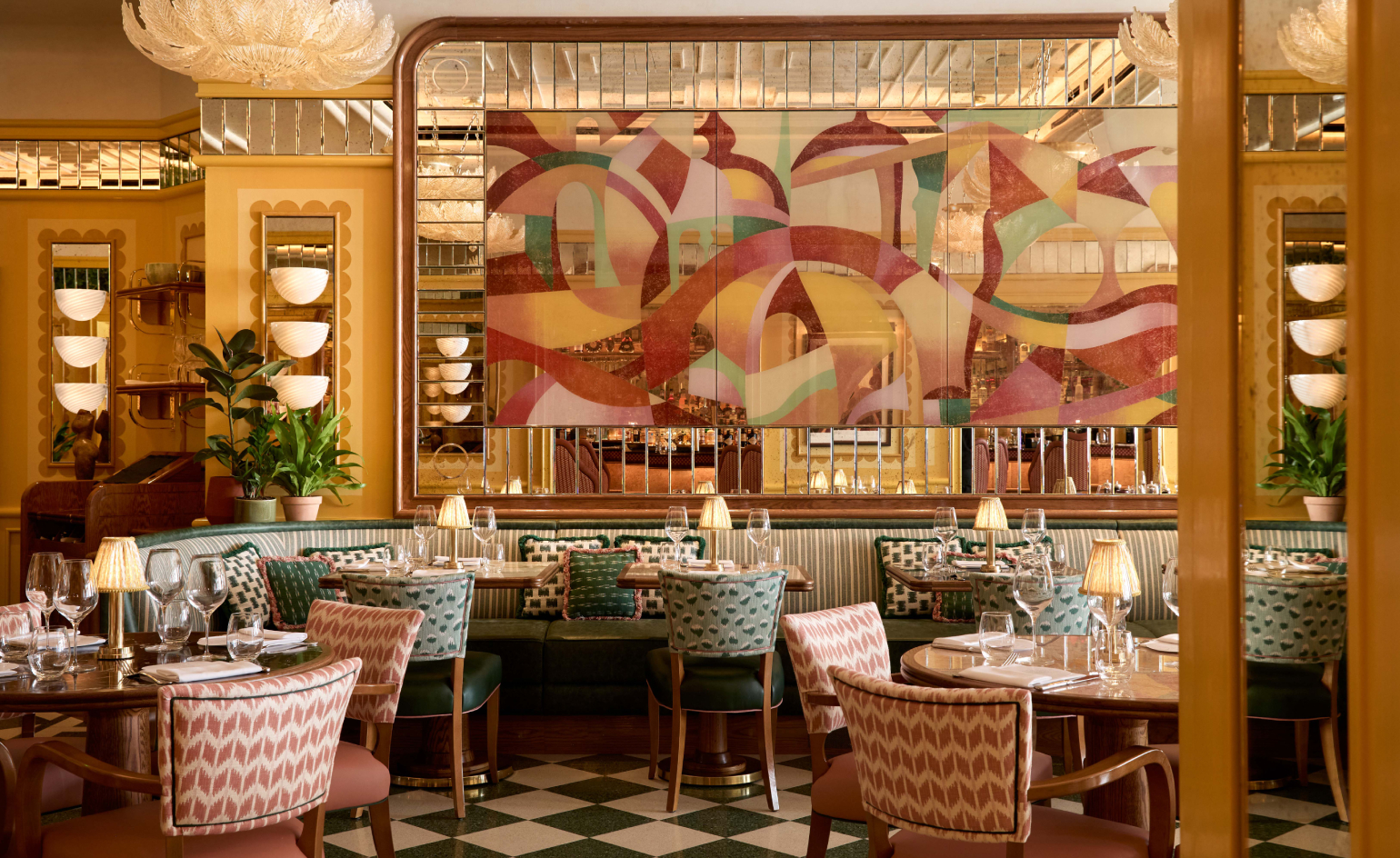 Cicchetti Piccadilly is like dining inside a Venetian sunset. Here's what we ate
Cicchetti Piccadilly is like dining inside a Venetian sunset. Here's what we ateSan Carlo Group’s beloved Italian haunt returns with a glowing new look, just steps from its original home
-
 'What does it mean that the language of photography is invented by men?' Justine Kurland explores the feminist potential of collage
'What does it mean that the language of photography is invented by men?' Justine Kurland explores the feminist potential of collage'The Rose,' at the Center for Photography at Woodstock (CPW) in Kingston, New York, examines the work of over 50 artists using collage as a feminist practice
-
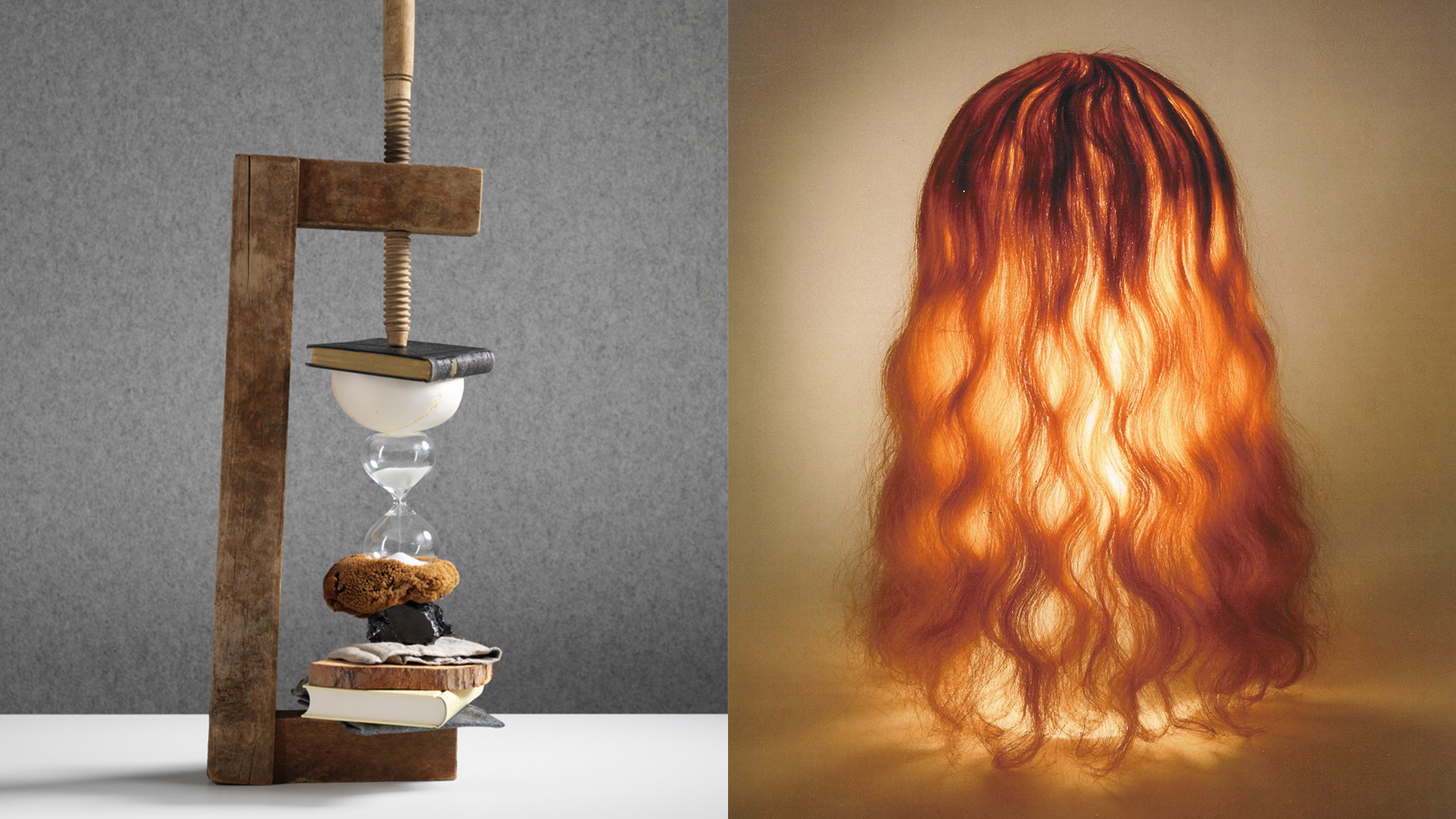 Rolf Sachs’ largest exhibition to date, ‘Be-rühren’, is a playful study of touch
Rolf Sachs’ largest exhibition to date, ‘Be-rühren’, is a playful study of touchA collection of over 150 of Rolf Sachs’ works speaks to his preoccupation with transforming everyday objects to create art that is sensory – both emotionally and physically
-
 After decades capturing the world’s fashion-set, photographer Johnny Rozsa picks up a paint brush
After decades capturing the world’s fashion-set, photographer Johnny Rozsa picks up a paint brushIn his first exhibition of paintings, the New York-based artist celebrates the vibrancy of Tangier while rediscovering a familiar creative outlet
-
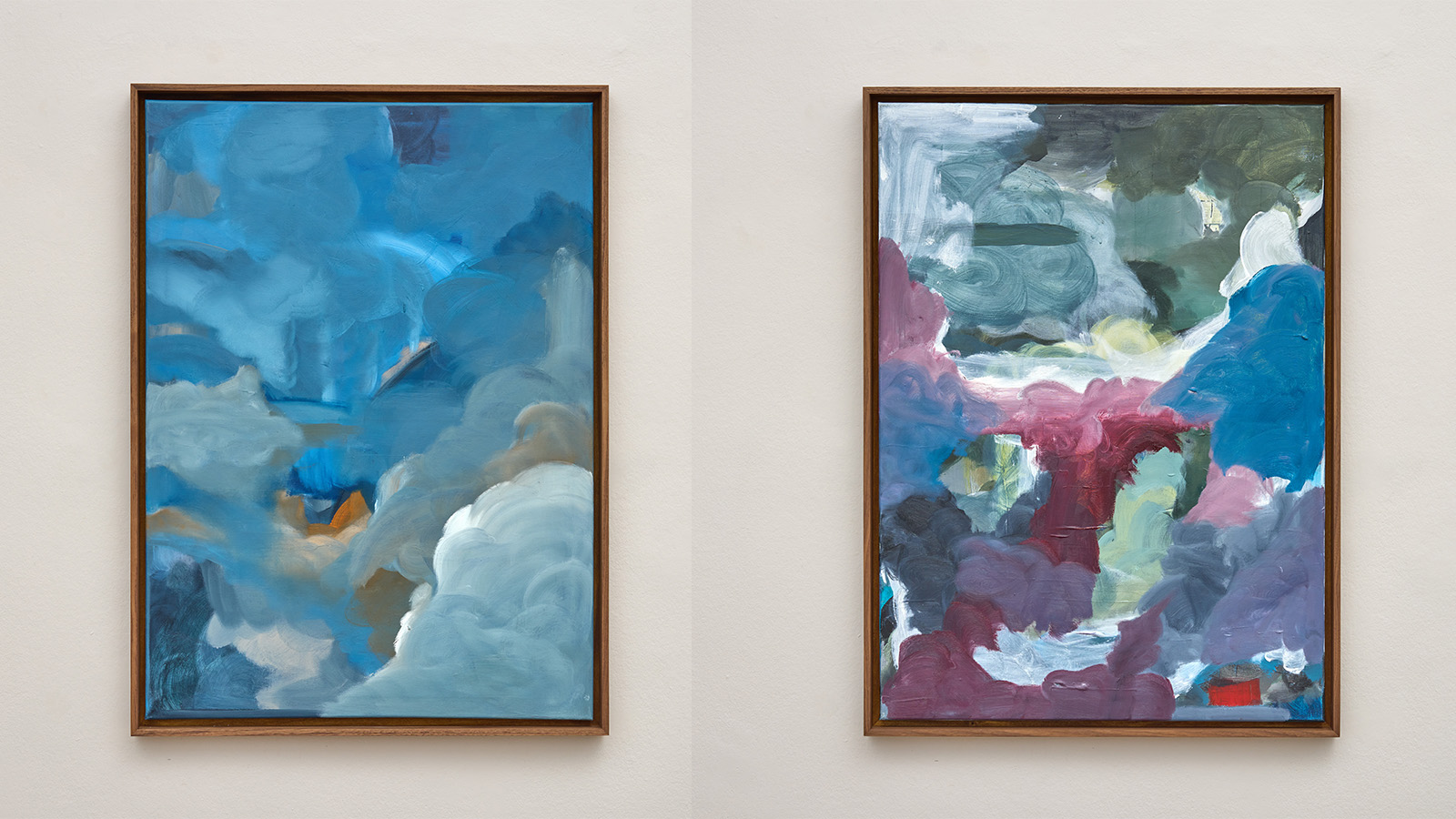 Leila Bartell’s cloudscapes are breezily distorted, a response to an evermore digital world
Leila Bartell’s cloudscapes are breezily distorted, a response to an evermore digital world‘Memory Fields’ is the London-based artist’s solo exhibition at Tristan Hoare Gallery (until 25 July 2025)
-
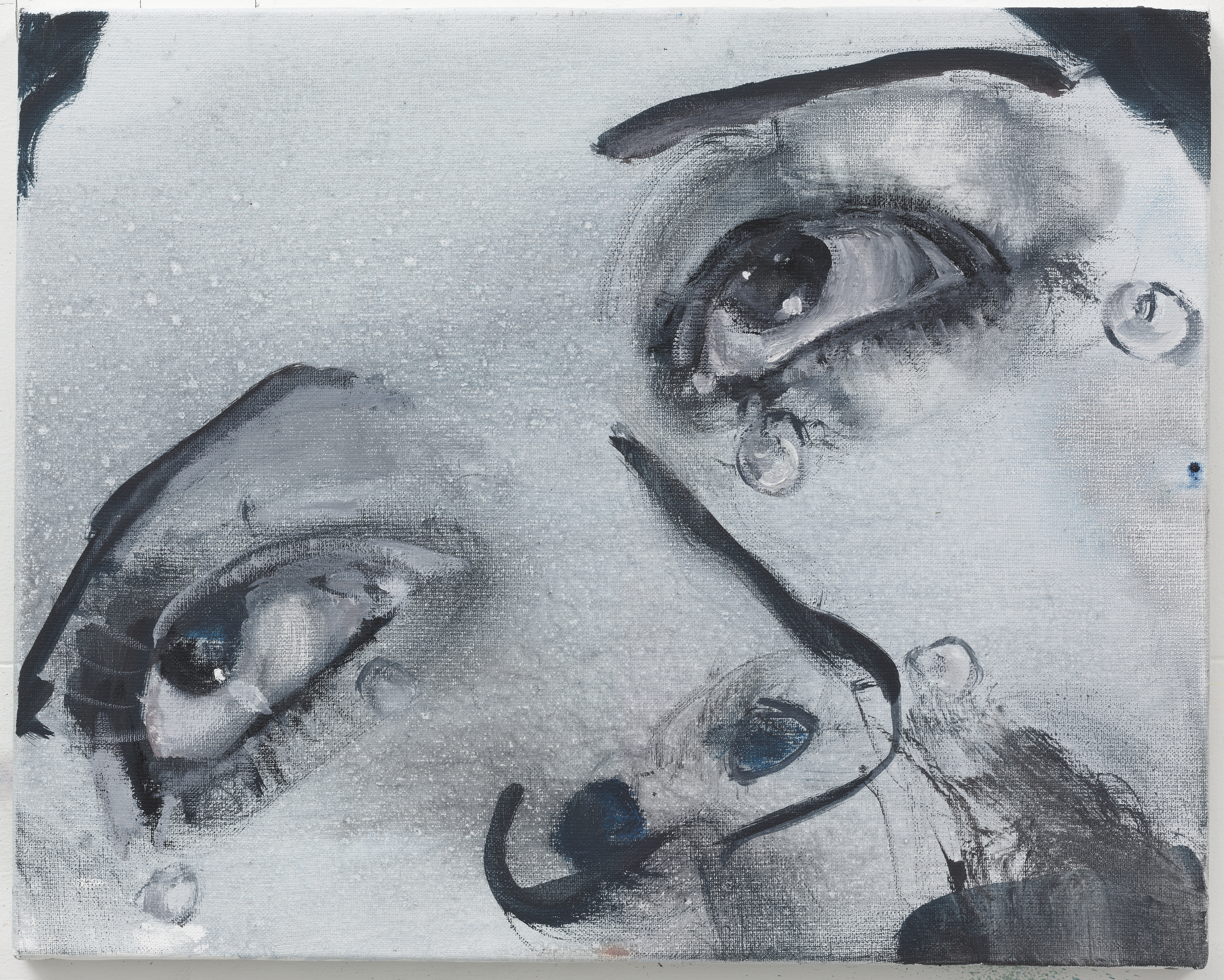 Marlene Dumas’ charged, exposed and intimate figures gather in Athens
Marlene Dumas’ charged, exposed and intimate figures gather in AthensThe artist’s work from 1992 until the present day goes on show at Athens’ Museum of Cycladic Art (until 2 November)
-
 Get lost in Megan Rooney’s abstract, emotional paintings
Get lost in Megan Rooney’s abstract, emotional paintingsThe artist finds worlds in yellow and blue at Thaddaeus Ropac London
-
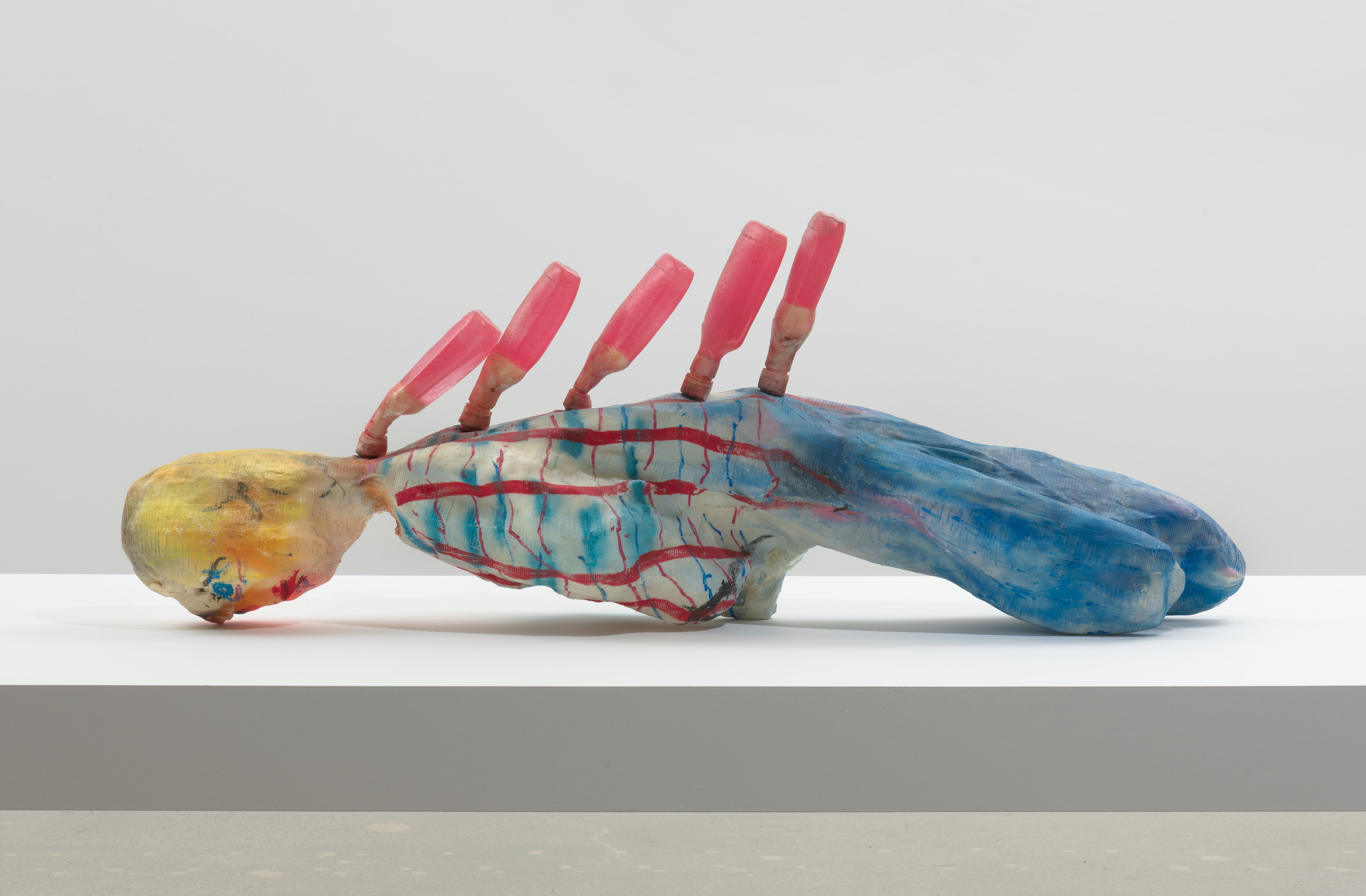 Kaari Upson’s unsettling, grotesque and seductive world in Denmark
Kaari Upson’s unsettling, grotesque and seductive world in DenmarkThe Louisiana Museum of Modern Art in Denmark is staging the first comprehensive survey of late artist Kaari Upson’s work
-
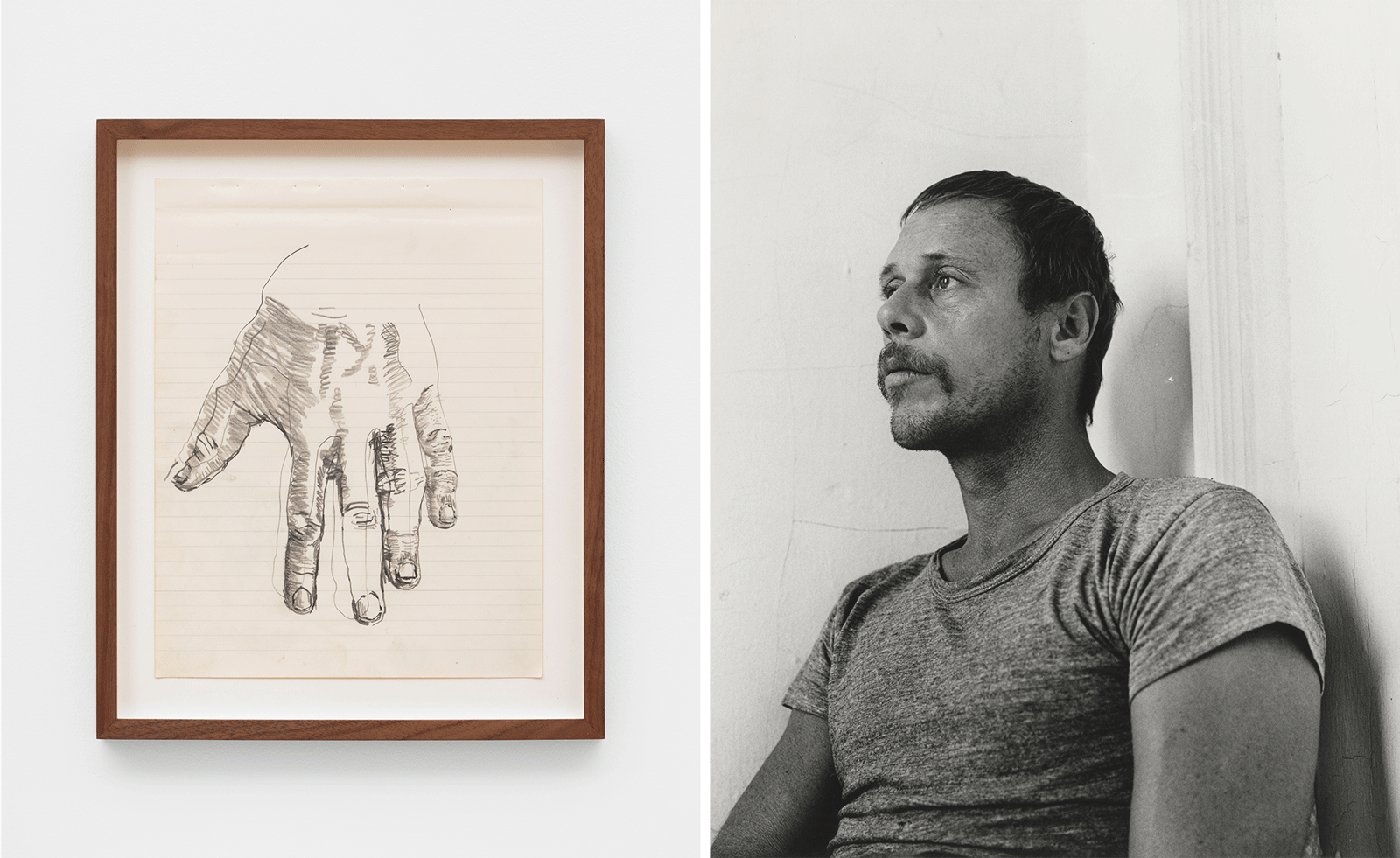 Inside the brilliant and short career of Paul Thek: 'The goal was to live a creative existence as a maker – and he lived in a saint-like fashion'
Inside the brilliant and short career of Paul Thek: 'The goal was to live a creative existence as a maker – and he lived in a saint-like fashion'Paul Thek's paintings are now viewable at Thomas Dane Gallery in London, in an exhibition curated by Kenny Schacter and Jonathan Anderson.
-
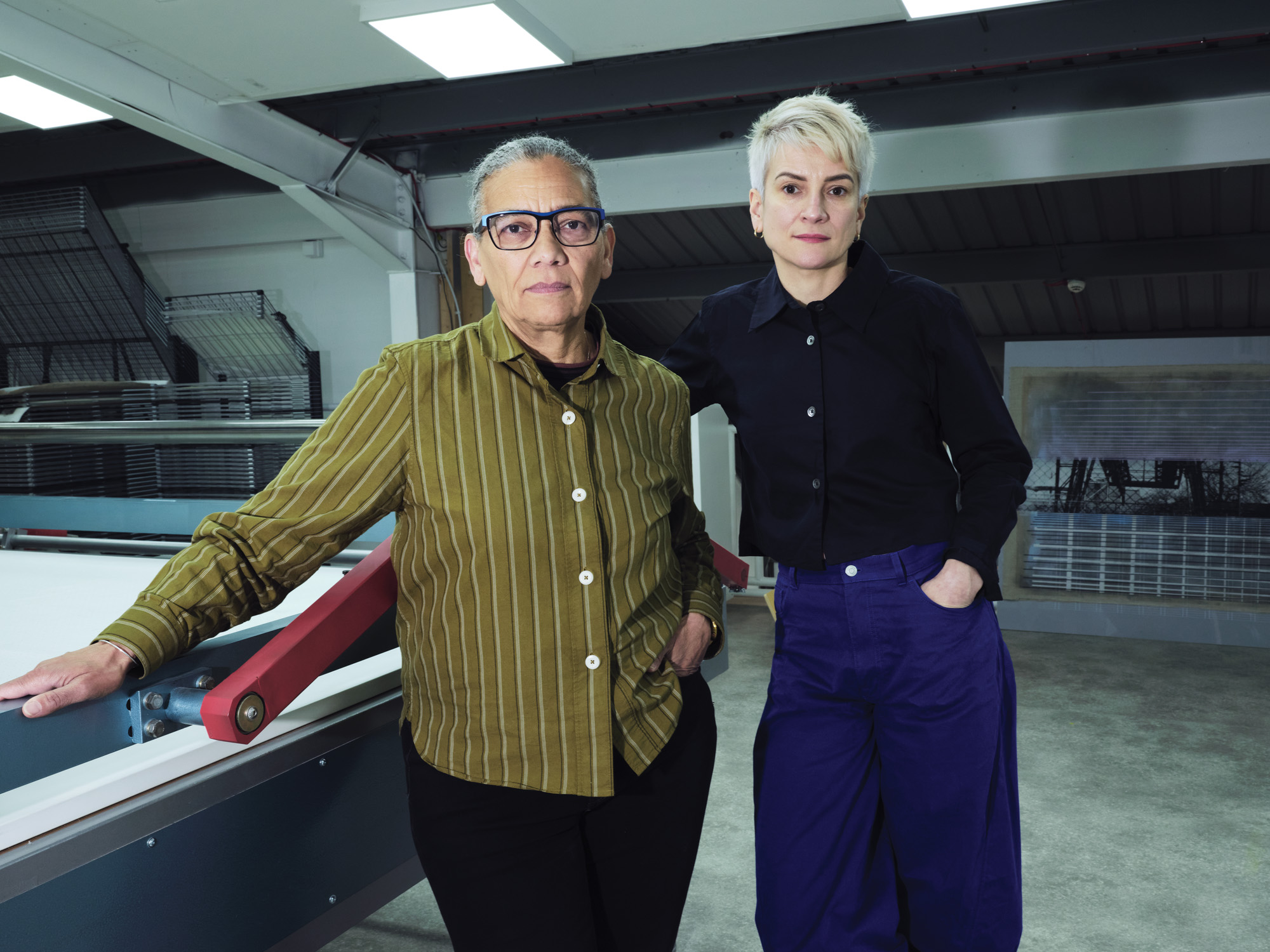 Lubaina Himid and Magda Stawarska’s new show at Kettle’s Yard will uncover the missing narratives in everyday life stories
Lubaina Himid and Magda Stawarska’s new show at Kettle’s Yard will uncover the missing narratives in everyday life storiesThe artists and partners in life are collaborating on an immersive takeover of Kettle’s Yard, Cambridge, in an exhibition that delves into a lost literary legacy